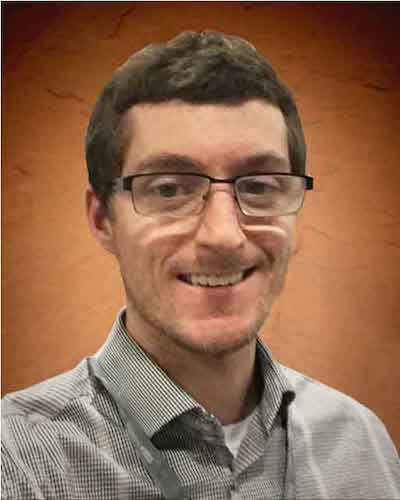
Kevin Lynn McCormack
Carbon Science Initiative Director
Phone: 801-581-5126
Carbon Capture and Storage
Conventional and Unconventional Reservoir Geomechanics
Crustal Seismology
B.S. in Geoscience – University of Utah (2013)
M.S. in Geophysics – Stanford University (2016)
Ph.D. in Geophysics – Stanford University (2020)
Research Interests
- Reservoir Geomechanics
- Seismology
- Induced Seismicity
- Carbon Sequestration
- Coupled Hydrologicmechanical Reservoir Simulations
- Induced Seismicity Hazards
Kevin McCormack first joined EGI in 2009 as an undergraduate researcher in the Carbon Science Research group. During his time there he collaborated with a number of M.S. students doing field work, lab work, and data processing. His main focus was to develop a novel method of determining the direction of carbon dioxide leaks using an eddy covariance tower.
After four fruitful years with EGI, Kevin went on to pursue his graduate studies in geophysics at Stanford University. He was responsible for coursework, teaching, and research. The primary theme for his teaching endeavors was reservoir geomechanics. Indeed, one chapter of his thesis was related to how a certain unconventional reservoir in Colorado behaved during stimulation. He also did research focused on seismology both in terms of analyzing statistical phenomena in Gutenberg-Richter relationships, and in analyzing P-wave receiver functions as a potential means to determine the orientation of the maximum horizontal principal stress. In addition to the computational work of seismology and geomechanics, he also conducted a laboratory study of unconsolidated sand and clay synthetic specimens in relation to the applicability of certain nuclear magnetic resonance techniques.
Upon completion of his PhD, Kevin has returned to EGI where he is happy to be a postdoctoral research scholar in the Carbon Science Research group working closely with Professor Brian J. McPherson. His focus during his postdoctoral work will be on the hazards of induced seismicity associated with carbon sequestration. This opportunity brings together both his passion for the inner-workings of the solid earth and the remediation of anthropogenic climate change.
Research Experience
Statistical analysis of Gutenberg-Richter relationships
Deconvolution of receiver functions
Experimental technique of determining the maximum horizontal principal stress in the crust with receiver functions
Generating a stress profile based on anisotropic velocity models
Viscoplastic stress relaxation
Location of microseismic hypocenters in an unconventional play
Laboratory investigation of Nuclear Magnetic Resonance properties and techniques
Depletion induced seismicity
Developing focal plane mechanisms for microseismic events
Future Research Focus
- Reactivity of hydraulic fracturing fluid and brine with shales Location of microseismic hypocenters Focal plane mechanisms for microseismic events
